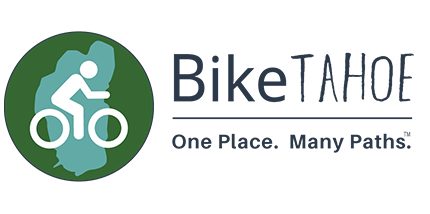Road Safe: Road Biking Safety Tips

Lake Tahoe Road Cycling along the East Shore
Sadly, bicyclist fatalities are increasing across the country and Lake Tahoe is no exception. As bicycling’s popularity and use increases, so too fatalities. The recent deaths in the Lake Tahoe region has prompt the necessity to review and share the laws and best practices for motorists and bicyclist to be Road Safe.
Road safe is the responsibility of all road users. It is a condition when all users understand, stay alert and continually comply with the rules of the road, and best practices to minimize the risks of road user conflicts and subsequent injuries.
Recent findings provided by the National Highway Traffic Safety Administration show the following facts:
• 840 bicyclist fatalities in 2016
• 71% of motor vehicle crashes with bicyclists were in urban area
• 35% alcohol was involved (either motorist or bicyclist)
• Average age is 46 with the largest group 50-59
• 95% (800) were killed in single-vehicle crashes
• 78% struck by the front of the vehicle
• 42% were struck by light trucks
In 2016, California had 147 fatalities and Florida with 138. Next highest was Texas at 65.
Let’s recommit to being Road Safe.
Both motorists and bicyclists must understand and respect people on bicycles are the most vulnerable to injury, and have the same rights and responsibilities as motorists. The following are some of the essential laws and best practices for motorists and bicyclists to be Road Safe.

Share The Road highway sign.
Motorist Share the Road
• Obey the Laws. Obey the posted speed limit, and reduce speed to prevailing traffic, road conditions, weather and the presence of bicyclists and pedestrians.
• 3 Feet to Pass. Provide sufficient distance, at least 3 feet, when passing a bicyclist. It is the law in California, Nevada and other states. Avoid crossing the double centerline when passing. Only pass when it is safe for all road users.
• Bicyclists as Road Users. Understand and accept the law that recognizes bicyclists as having the same rights and responsibilities as motorists.
• May Use Full Lane. A bicyclist May Use Full Lane of a roadway when conditions are present that it is the safest option – no shoulder.
• Be Alert. Look in your side view mirror and behind before moving into the right lane to turn – a bicyclist may be present.
• Always Look. Look to see there are no bicyclists or vehicle before opening the door when parked and while exiting a parking space.
Bicyclists Be Smart and Safe
• Wear Helmet. Always where a properly fitted helmet.
• Be seen. Wear highly visible clothing (fluorescent colors) and wear reflective bands.
• Bike Good to Go. Make sure your bike functions properly – brakes, gears, and has light reflectors.
• Be Strategic. Plan your ride to avoid high traffic areas or construction zones and this simple strategy can minimize risk of road conflicts.
• Obey Laws. Obey all rules of the road laws, same as a motor vehicle: stopping at traffic signs, signals, and lane markings. When riding on the road, bicyclists must ride in the same direction as traffic, and as far to the right of the road as is safe.
• May Use Full Lane. When shoulders are not present, the road is narrow, there is construction or debris, potholes or parked cars, bicyclists may legally use the entire lane for safety. However, if five or more cars are behind you, you must pull over, where safe, and allow the vehicles to pass.
• Night Riding. When riding at night, you must have a white headlight and a rear flashing red light to increase visibility for other road users.
• Hands on the Bars. Always keep both hands on the handlebars – avoid using phone while riding and place materials, snacks etc. in a backpack or basket to free your hands.
• Ride Defensively. Assume other road users do not see you and make smart decisions to avoid conflicts at driveways; intersections, right turn lanes, and parked cars.
• Ride predictably. Riding in a steady straight line with help motorists understand your intentions. Avoid swerving, jumping in and out of parked cars, or off and on sidewalks or bike paths.
• Take a Class. If riding regularly on a roadway, take a traffic safety course for bicyclist. Parents take your child to a Bike Safety Rodeo – they are typically free and often lead by law enforcement and/or a bicycle advocacy organization.

Kids Bike Safety Rodeo
You can help being Road Safe.
As you drive your car or ride your bicycle, obey the laws and use best practices. When you see family, friends or strangers violating the law or making risky decisions, be friendly, introduce yourself, and share with them how their decisions are placing them and others at risk. Then share with them alternatives and best practices for being Road Safe and check for understanding. Many bicyclist just do not know rules of the road apply to them. Thank you.
Here is a fun and informative bike safety video produced by the National Highway Traffic Safety Administration, check it out: https://youtu.be/nf5WQXFvrkk .


